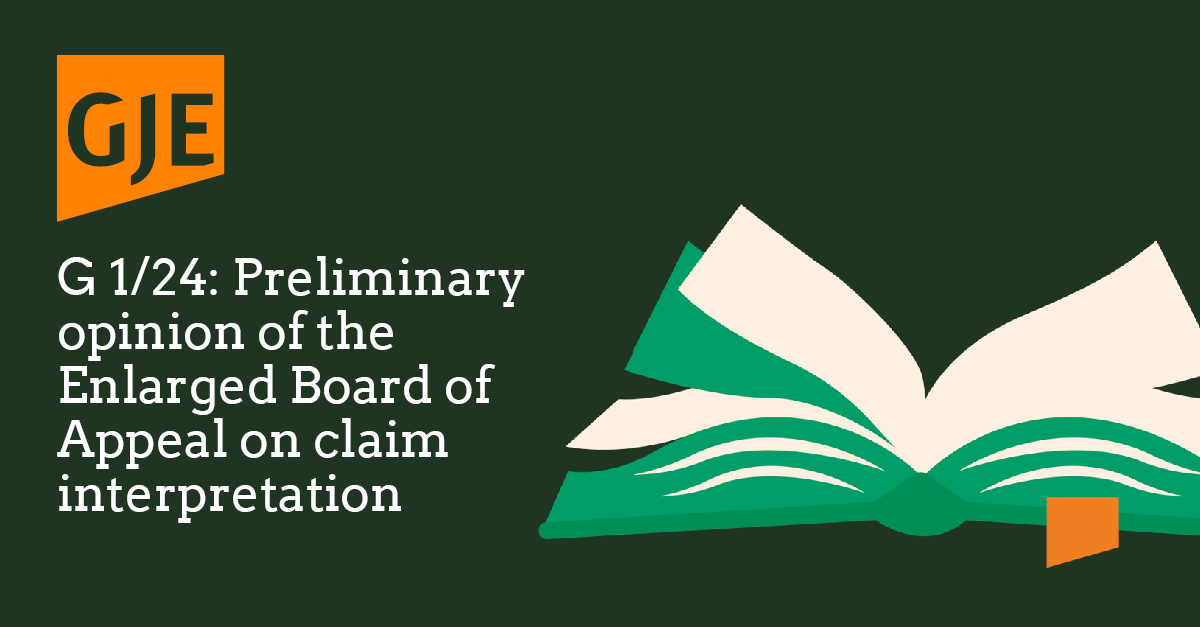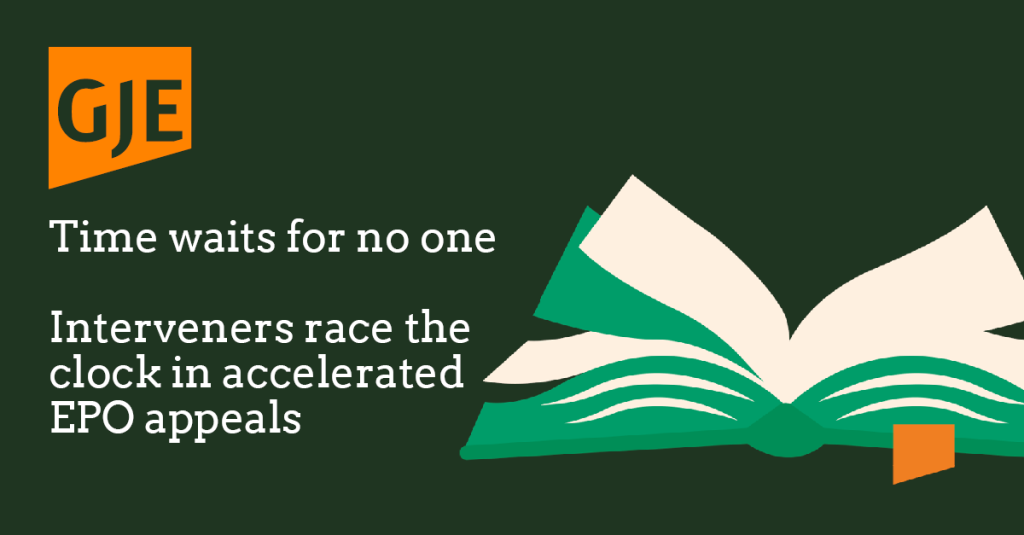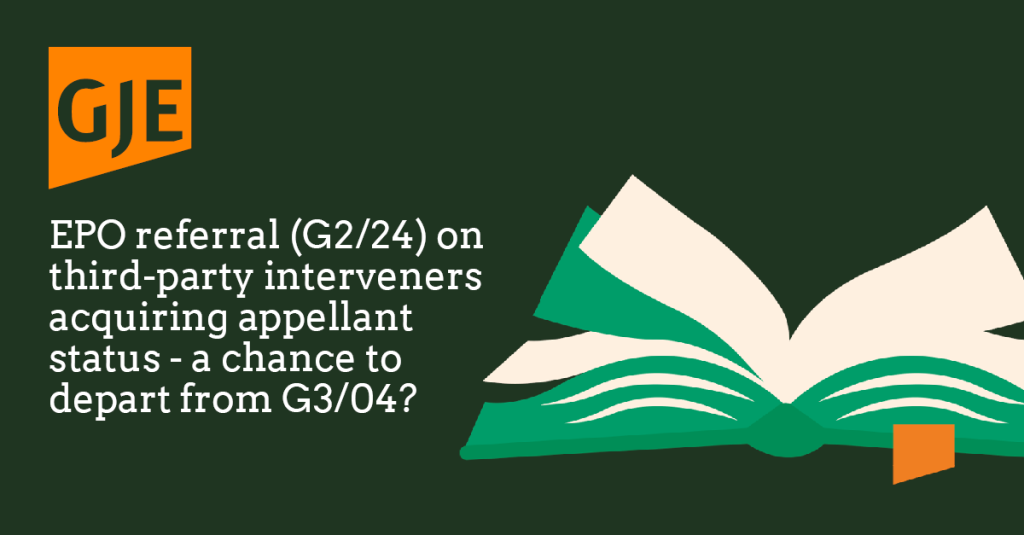
Executive summary
The Enlarged Board of Appeal has given its preliminary opinion in respect of referral G 1/24. The referral is of fundamental importance, and answers to the questions raised will be relevant to every European patent and patent application. The referral aims to clarify purported legal uncertainties as to whether and, if so, how and under what circumstances the description and drawings should be used to interpret patent claims when assessing the patentability of an invention at the European Patent Office.
The preliminary opinion is not binding on the Enlarged Board, but it provides some insight into the issues that the Enlarged Board currently considers to be of significance and will be discussed at the oral proceedings to be held on 28 March 2025. The preliminary opinion is brief and does not reveal much about the thinking of the Enlarged Board on the detailed answers that it will ultimately give to the referred questions, or on the multiple amicus curiae briefs that were filed in 2024.
Background to G 1/24
A referral to the Enlarged Board of Appeal must be made by a Technical Board of Appeal if the Technical Board considers that a decision of the Enlarged Board is required to ensure the uniform application of the law or if it considers that a point of law of fundamental importance arises that needs clarification.
The referral G 1/24 was made in decision T 439/22, relating to European Patent No. 3076804. The patent claimed a heated aerosol-generating article for use with an electrically-operated aerosol generating device comprising, inter alia, a gathered sheet of aerosol-forming material circumscribed by a wrapper.
The key issue for the Technical Board was how the term “gathered sheet” should be interpreted – if it was to be assigned its usual meaning in the technical field, then the claimed subject matter would be novel, however, if it was to be interpreted in light of a definition given by the patentee in the description, then “gathered sheet” would have a broader meaning and the claimed subject matter would lack novelty.
This raised the fundamentally important question of whether the description should be used to interpret the claims when assessing the patentability of the invention. The referring Technical Board identified divergence in the case law on several decisive issues:
- “legal basis for construing patent claims”
- “whether it is a prerequisite for taking the figures and description into account when construing a patent claim that the claim wording when read in isolation be found to be unclear or ambiguous”
- “extent to which a patent can serve as its own dictionary”
The Technical Board therefore issued decision T 439/22 referring questions to the Enlarged Board.
The referral
The questions were referred under G 1/24 (“Heated aerosol”), and are as follows:
- Is Article 69(1), second sentence EPC and Article 1 of the Protocol on the Interpretation of Article 69 EPC to be applied on the interpretation of patent claims when assessing the patentability of an invention under Articles 52 to 57 EPC?
- May the description and figures be consulted when interpreting the claims to assess patentability and, if so, may this be done generally or only if the person skilled in the art finds a claim to be unclear or ambiguous when read in isolation?
- May a definition or similar information on a term used in the claims which is explicitly given in the description be disregarded when interpreting the claims to assess patentability and, if so, under what conditions?
As such, the referral seeks to clarify legal uncertainties as to whether the description and drawings should be used to interpret patent claims when assessing the patentability of an invention at the European Patent Office and, if so, how and under what circumstances.
The preliminary opinion in respect of G 1/24
The preliminary opinion of the Enlarged Board of Appeal is that Questions 1 and 2 are admissible. As to matters of substance, however, it appears that followers will need to wait for definitive answers to these questions.
In more detail, the Enlarged Board considers that Question 1 raises at least two issues that will need to be discussed: first whether the principles of interpretation set out in Article 69(1), second sentence, EPC and Article 1 on its interpretation are to be applied to the interpretation of patent claims when assessing the patentability of an invention under Articles 52 to 57 EPC; second if these Articles are the legal bases for the principles that are to be applied to the interpretation of patent claims when assessing the patentability of an invention under Articles 52 to 57 EPC. The opinion does not go into detail about what else might provide such basis.
So, the preliminary opinion of the Enlarged Board has answered Question 1 with more questions.
With respect to Question 2, the Enlarged Board gives its current opinion that the description and the figures can be referred to in the course of claim interpretation.
This is consistent with Article 69(1), second sentence, EPC “…Nevertheless, the description and drawings shall be used to interpret the claims”, but the Enlarged Board has so far provided no hint of its thinking on whether the description and figures should/must be consulted when interpreting the claims to assess patentability, and whether this may be done generally or only if the person skilled in the art finds a claim to be unclear or ambiguous when read in isolation.
As to Question 3, the Enlarged Board has indicated that it is of the view that the question is inadmissible because an answer to it is not required for the referring Technical Board to reach a decision on the case before it. This in itself is interesting since the pivotal issue in the underlying case was that novelty of the claimed subject matter hinged on whether a definition in the description should be used when interpreting the term “gathered sheet” in the claims.
The Enlarged Board does not give reasons for its current view that Question 3 does not need to be answered. Perhaps this means that it takes the view that it is just one example of a situation that would fall under the general principles to be elucidated in answer to Question 2. The referring Technical Board indeed suggested that Question 3 is “less critical” than the other referred questions. We wait to hear more from the Enlarged Board on this, perhaps at the oral proceedings on 28 March 2025.
We will be reporting as the case progresses, so follow us on LinkedIn for further G 1/24-related news and insights. In the meantime, please contact us if you would like to discuss the potential relevance of G 1/24 to your business, or email gje@gje.com.


